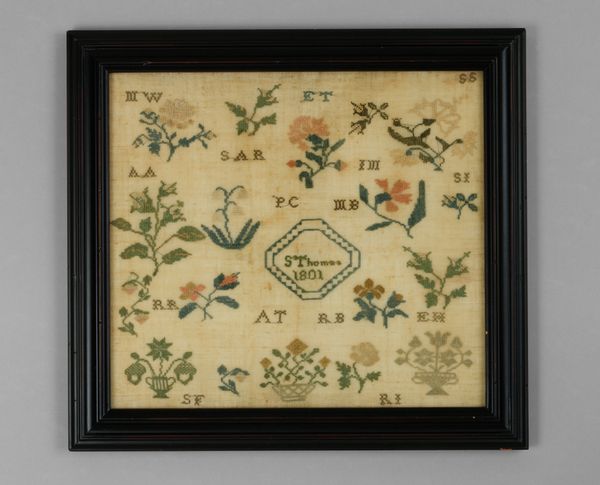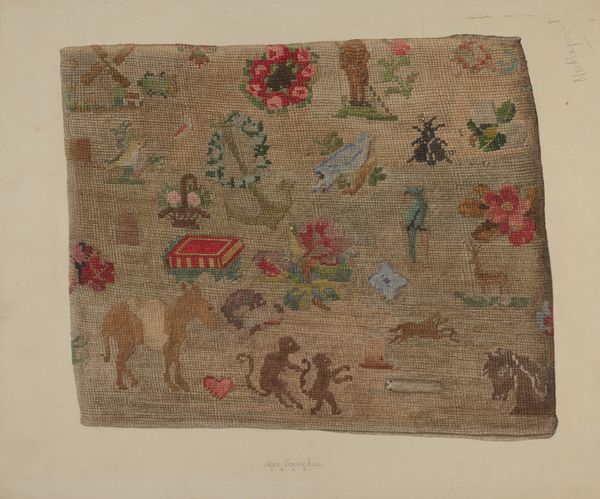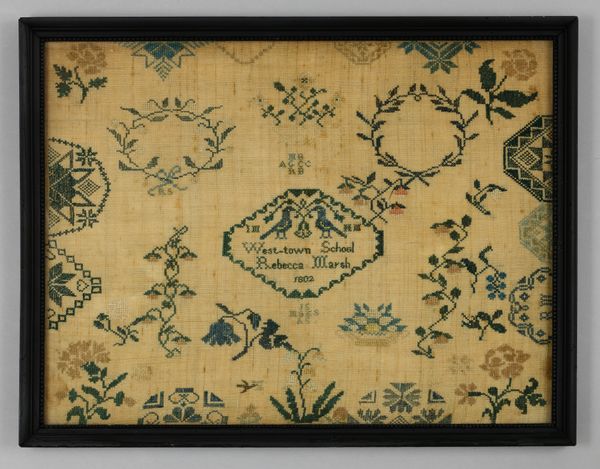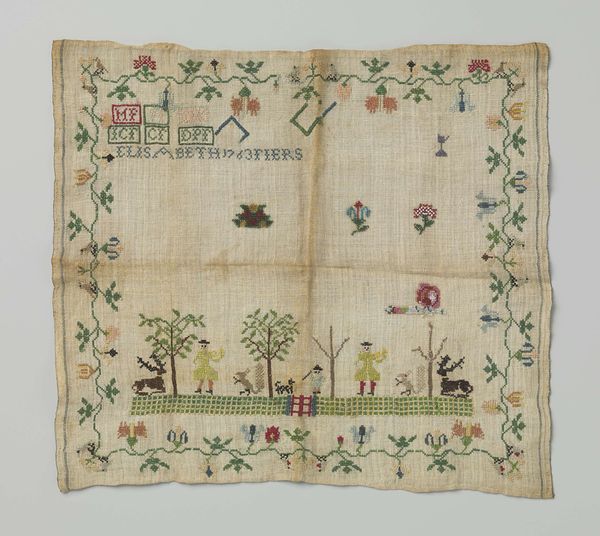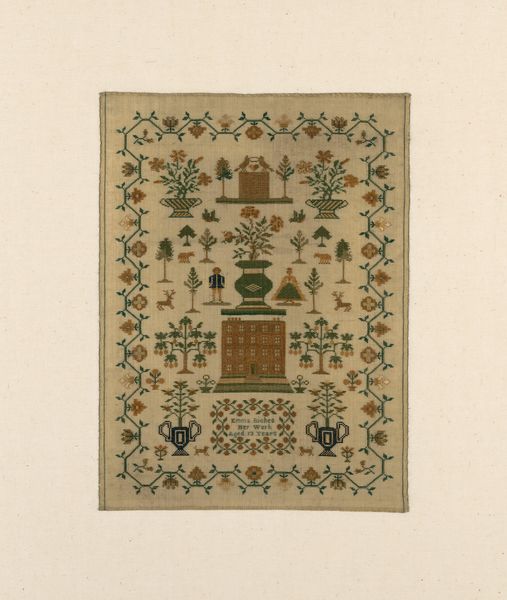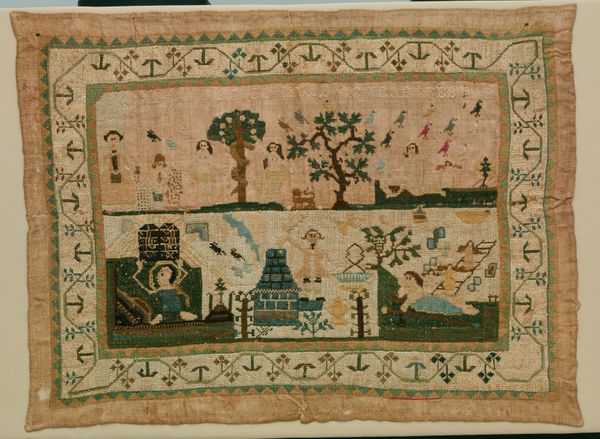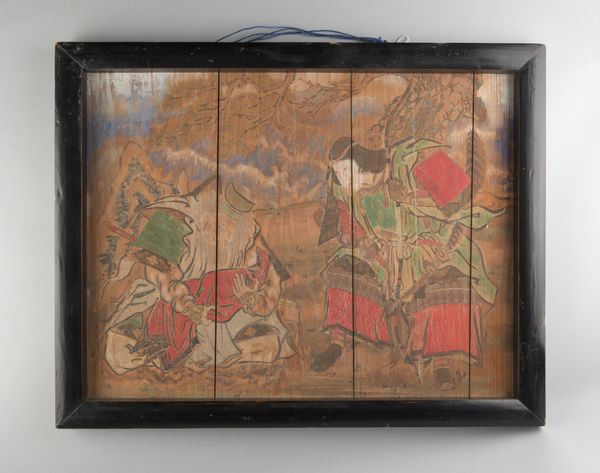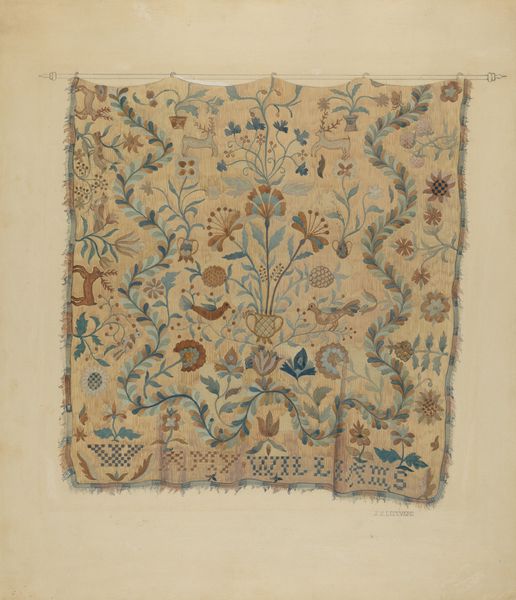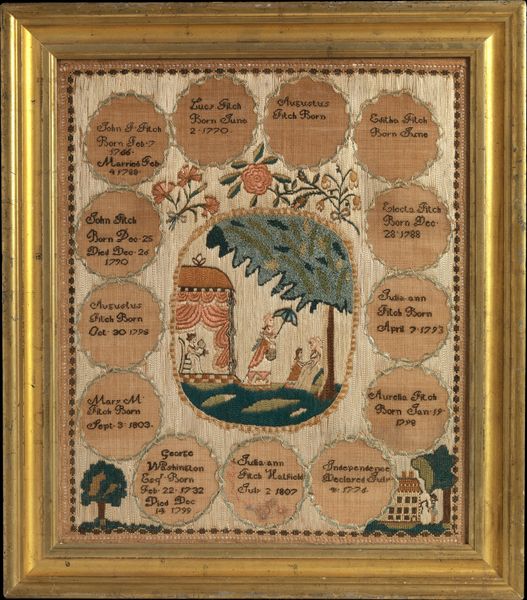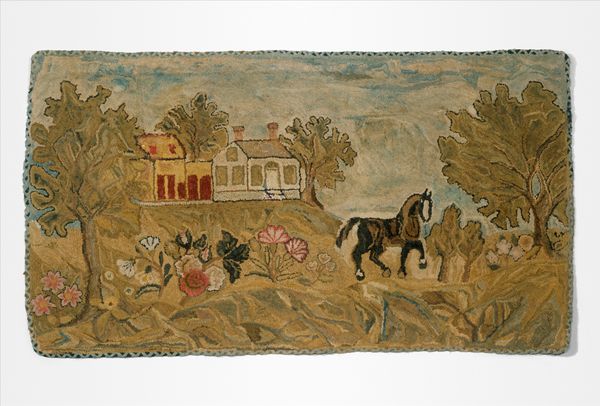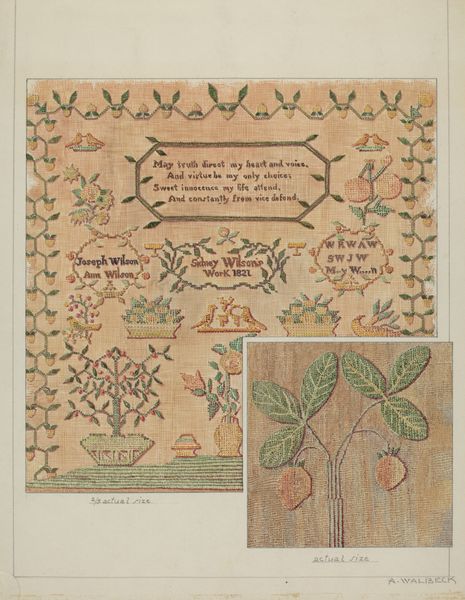
drawing, textile, pencil
#
portrait
#
tree
#
drawing
#
natural stone pattern
#
narrative-art
#
landscape
#
textile
#
house
#
handmade artwork painting
#
folk-art
#
pencil
#
men
#
united-states
Dimensions: 15 3/4 × 18 1/2 in. (40 × 47 cm) Framed: 20 1/4 × 22 3/4 in. (51.4 × 57.8 cm)
Copyright: Public Domain
Curator: At first glance, it presents such an idyllic world—almost aggressively quaint, wouldn't you say? Editor: I see what you mean. But there's something deeply comforting, maybe even deliberately crafted in its evocation of an ordered society, an exercise in moral instruction as it were. Shall we delve a little deeper? This is “Biblical Sampler,” made between 1799 and 1805, stitched by Ann Magdalen Yates. Curator: A sampler, yes. An educational tool, primarily for young women, as opposed to, say, merely aesthetic achievement. It’s so obviously of its time; it seems self-consciously constructed within the frameworks and the confines of that late-18th, early 19th century mindset. Editor: Precisely. I’m intrigued by the repeated motifs – trees, houses, figures enacting… scenes? Can you perhaps provide some social context about this practice? Curator: Absolutely. The sampler functioned both as a demonstration of skill and a means of internalizing societal norms. The biblical themes chosen would reflect the family’s religious views, while the act of stitching promoted discipline and patience – qualities deemed desirable in young women. Notice how these folk-art works also represent prevailing beliefs regarding femininity, domesticity, and piety at the time. These values helped the social and moral order for those young women's community Editor: That resonates strongly. Consider the individual figures—their placement seems almost symbolic. On closer inspection, it is more than a pleasing scene: it represents faith, society, and morality all harmoniously interwoven. And look at the deliberate way houses are represented. Not one but many. Is that meant to speak for family or community. Curator: It is an image where stability, prosperity and godliness go together as virtues. This work is more than pretty stitching and demonstrates that in art, what is intentionally selected and left out of an artwork also speaks powerfully to the values and norms of a specific culture in a time. Editor: Yes, indeed. An innocent yet subtly powerful declaration, stitched in threads of expectation. It definitely invites reflection on the roles, ideals, and cultural expectations.
Comments
No comments
Be the first to comment and join the conversation on the ultimate creative platform.

